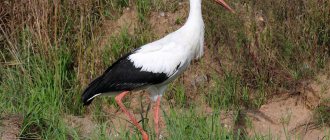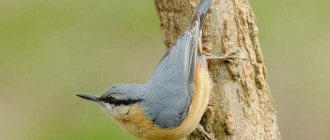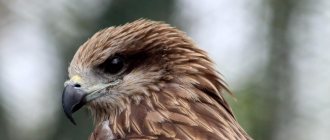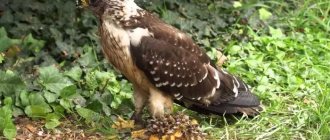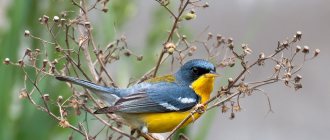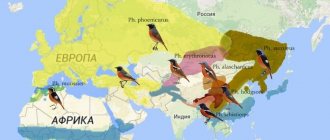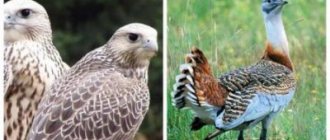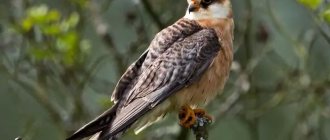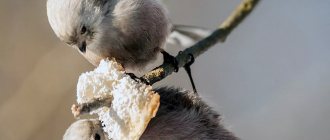Among the huge variety of birds (more than 9,800 species live on planet Earth), there are many delightful ones that attract attention and evoke delight and admiration for their unusual and amazingly beautiful appearance. There are many such birds in the tropics of southern countries. But in other parts of the Earth there are relatively rare and unusual specimens that attract attention. Some information about some of them is presented in this article.
Yellow color is atypical for birds living in Russia and neighboring countries, since many predators live in these areas. Such a bright color unmasks birds, especially in the snow. Therefore, many can identify and name not all birds with a yellow breast (or belly) that live in these places. Few species of birds of this color can be seen in the territory of the former CIS.
What are the birds with a yellow belly called? Where can they be found and what is their way of life? We will try to figure this out further.
Common oatmeal
This is a rather small bird belonging to the bunting family. It is similar in size to a sparrow, but its tail is longer. The body length reaches up to 20 centimeters, the wingspan is up to 30 cm. In Russia, few people know this beautiful bird, since its habitat is Baikal and some areas of Siberia. It should be noted that the common bunting has not only a yellow breast, but also a head. And one of the subspecies, the yellow-throated bunting, which once lived in Primorye, also has a peculiar crest.
The most real bird with a yellow belly is a male bunting. During the mating season, it is distinguished by feathers of golden-yellow tones located on the head, belly, chest, cheeks and chin. On the chest there are numerous streaks of a grayish-olive hue in the upper part and reddish-chestnut in the lower part. The back is grayish-chestnut with dark longitudinal streaks. The wings are painted brown. The beak is short but massive.
The female is generally similar to the male, however, her color is duller. Yellow tones have a slight greenish tint, and instead of brown, brown predominates. All young birds look like females. Buntings fly in waves, making several jerks.
Conclusion
Due to the fact that river and marshy areas predominate in the Moscow region, many species of birds that feed on river fish live here. These “fish eaters” include the night heron, black-headed gull and tern. Although swans were previously considered the usual inhabitants of the Moscow environs, at present, this bird species here is on the verge of absolute extinction.
Speaking about the fields near Moscow and the grassy surroundings of this region, here you can easily find many species of the warbler family, such as: garden, tree, willow warbler, etc. The forests of the region are home to flycatchers, pipits and buntings.
Despite the fact that birds of prey need a wide range of free space for comfortable hunting, hawks often appear in large cities. Species such as kestrels, falcons and sparrowhawks are increasingly found in urban areas.
Features of oatmeal
This amazing bird sings like a nightingale. The number of trills can often reach up to 300 species in one hour. The bunting surpasses almost all known birds in its musicality.
This bird feeds mostly on plant foods. Even in summer, she does not pay any attention to insects. The diet consists of plantain seeds, oats, wheat, and tree buds. And yet, oatmeal violates the rules of its “fasting”. This only happens during the breeding season. The female needs better nutrition at this time. It feeds on spiders, woodlice and small slugs.
This bird with a yellow belly lives in the wild, and therefore its life expectancy is approximately 3 years. There are cases where individual specimens living in captivity lived up to 13 years.
Certain species of the starling family
The starling family has about 32 species, and only a few of them have a yellow beak to one degree or another.
Yellow-billed Buffalo Starling The name of this bird speaks for itself: its rather strong beak is constantly yellow, and the upper part itself is diluted with a slightly red color. As a rule, such a bird has a length of up to 21 centimeters, and its weight ranges from 55-69 grams. The entire plumage is divided into colored areas: the head is somewhat dark, the top of the body is dark brown, the tail is light beige, the upper part of the breast is light brown, and the abdominal part is presented in a mixture of yellow-gold and yellow-brown colors. Yellow-billed starlings cannot be found on Russian territory; rather, they are inhabitants of Africa and Sinegal.
Gray starling The next species - the gray starling - has a color corresponding to its name in the abdominal and chest parts, but on the head, in addition to black feathers, there can also be white ones. They have a yellow-orange beak with a dark tip. Gray females are much lighter than the males of this species.
Common Starling The most common species is the common starling, better known as the shpak, which is quite small in size. Its length is 18-21 centimeters, but its weight is 75 grams. The common starling has a fairly long beak with a downward curve, but not too powerful. Regarding the beak, it is worth noting that the standard black beak turns yellow only during the breeding season.
Sacred mynah A bird of the starling order, native to Sri Lanka, southwest and east India, and the Himalayas. Its appearance is quite bright: the color is completely black, and on both sides of the head there are bright yellow flaps of skin, the legs and beak are also lemon-colored. The average size of mynahs is 30 cm. They feed on both fruits and insects.
Dubrovnik
Another bird from the Bunting family lives in Northern Europe and Northern Asia. Its weight is 25 g, length – up to 17 centimeters, wingspan – 24 cm.
Due to its unusually bright plumage, the Dubrovnik resembles tropical birds. In summer, the head of males is almost black, the chest and throat are yellow. The back is brown, the belly is very bright yellow. There is a narrow chocolate-colored “collar” on the chest. Females have a brownish tint, with a yellowish belly and dark streaks on the sides and back.
Typical habitats are floodplains overgrown with shrubs, as well as meadows and forest edges with dense and tall herbs. Birds with a yellow belly fly to Southeast Asia for the winter. Her song is similar to ringing flute whistles.
Other birds of the Moscow region
Black-throated loon
| Latin name | Gavia arctica |
| English name | Black-throated diver, Black-throated loon, Arctic loon |
| Squad | Loons |
| Family | Loons |
| Body length, cm | 59-74 |
| Wingspan, cm | 110-130 |
| Body weight, kg | Male: 3.4, female: 2.3 |
| Features | In summer, the loon has a black throat, silky gray head and neck, and a black and white checkered back. In winter, the plumage becomes dark gray above and white below, with white spots on the sides. |
| Number, thousand pairs | 20,0–27,0 |
| Security status | Species of least concern (declining) The black-throated loon is listed in the Red Book of Latvia, Lithuania, as well as the Moscow region. |
| Habitats | Medium and large lakes |
| Additionally | The species differs from the red-throated in its large size, feather coloring and straight beak. Also, the color of the black-throated loon's back is more uniform in winter. The bird is distinguished from the white-throated and polar species by the color of its head plumage. Only an experienced specialist can distinguish between the black-throated and white-necked species. |
Brown-headed tit
Grey-headed chickadee
Black-headed chickadee
Tiemaker
| Latin name: | Charadrius hiaticula |
| English name: | Ringed plover |
| Kingdom: | Animals |
| Type: | Chordata |
| Class: | Birds |
| Squad: | Charadriiformes |
| Family: | Plover |
| Genus: | Plover |
| Body length: | 18-20 cm |
| Wing length: | 13-16 cm |
| Wingspan: | 48-58 cm |
| Weight: | 40—80 g |
Lapwing
Capercaillie
| Latin name: | Tetrao urogallus |
| English name: | Capercaillie |
| Kingdom: | Animals |
| Type: | Chordata |
| Class: | Birds |
| Squad: | Galliformes |
| Family: | Pheasant |
| Genus: | Capercaillie |
| Body length: | 110 cm |
| Wing length: | 34 cm |
| Wingspan: | 150 cm |
| Weight: | 4000—6500 g |
Gogol
Dove
| Latin name: | Columba |
| English name: | Pigeon |
| Kingdom: | Animals |
| Type: | Chordata |
| Class: | Birds |
| Squad: | Pigeonidae |
| Family: | Pigeon |
| Genus: | Pigeons |
| Body length: | 40 cm |
| Wing length: | 36-47 cm |
| Wingspan: | 50-70 cm |
| Weight: | 250—400 g |
Garden redstart
| Latin name: | Phoenicurus |
| English name: | Redstart |
| Kingdom: | Animals |
| Type: | Chordata |
| Class: | Birds |
| Squad: | Passeriformes |
| Family: | Flycatchers |
| Genus: | Redstarts |
| Body length: | 10-15 cm |
| Wing length: | 8 cm |
| Wingspan: | 25 cm |
| Weight: | 25 g |
Rook
| Latin name: | Corvus frugilegus |
| Kingdom: | Animals |
| Type: | Chordata |
| Class: | Birds |
| Squad: | Passeriformes |
| Family: | Corvids |
| Genus: | Crows |
| Body length: | 45-47 cm |
| Wing length: | 20-25 cm |
| Weight: | 320-500 g |
Merlin
| Latin name: | Falco columbarius |
| English name: | To be confirmed |
| Kingdom: | Animals |
| Type: | Chordata |
| Class: | Birds |
| Squad: | Falconiformes |
| Family: | Falcons |
| Genus: | Falcons |
| Body length: | 24-32 cm |
| Wing length: | 19-22 cm |
| Wingspan: | 53-73 cm |
| Weight: | 125—311 g |
Blackbird
| Latin name: | Turdus |
| English name: | Thrush |
| Kingdom: | Animals |
| Type: | Chordata |
| Class: | Birds |
| Squad: | Passeriformes |
| Family: | Blackbirds |
| Genus: | Blackbirds |
| Body length: | 19-28 cm |
| Wing length: | 11-13 cm |
| Wingspan: | 34 - 39 cm |
| Weight: | 68—100 g |
Bustard, or dudak
Grosbeak
| Latin name: | Coccothraustes |
| English name: | Grosbeak |
| Kingdom: | Animals |
| Type: | Chordata |
| Class: | Birds |
| Squad: | Passeriformes |
| Family: | Finches |
| Genus: | Grosbeaks |
| Body length: | 18 cm |
| Wing length: | 10-11 cm |
| Wingspan: | 33 cm |
| Weight: | 30 g |
Forest lark, or spinning top
| Latin name: | To be confirmed |
| English name: | To be confirmed |
| Kingdom: | Animals |
| Type: | Chordata |
| Class: | Birds |
| Squad: | Passeriformes |
| Family: | Larks |
| Genus: | To be confirmed |
| Body length: | 11-20 cm |
| Wing length: | 9.5—11.5 cm |
| Wingspan: | 35 cm |
| Weight: | 29—70 g |
Gray crane
| Latin name: | Gruidae |
| Kingdom: | Animals |
| Type: | Chordata |
| Class: | Birds |
| Squad: | Crane-like |
| Family: | Cranes |
| Genus: | Bustards |
| Height: | 90-180 cm |
| Wing length: | 75-115 cm |
| Wingspan | 150-230 cm |
| Weight: | 2-8 kg |
Robin
| Latin name: | Erithacus rubecula |
| English name: | To be confirmed |
| Kingdom: | Animals |
| Type: | Chordata |
| Class: | Birds |
| Squad: | Passeriformes |
| Family: | Flycatchers |
| Genus: | Robins |
| Body length: | 15-16 cm |
| Wing length: | 7 cm |
| Wingspan: | 20-22 cm |
| Weight: | 16-18 g |
Common greenfinch
| Latin name: | Chloris chloris |
| English name: | Greenfinch |
| Kingdom: | Animals |
| Type: | Chordata |
| Class: | Birds |
| Squad: | Passeriformes |
| Family: | Finches |
| Genus: | Goldfinches |
| Body length: | 14-17 cm |
| Wing length: | 8.1-9.5 cm |
| Wingspan: | 26-30 cm |
| Weight: | 20—31 g |
Snake eater
| Latin name: | Circaetus gallicus |
| English name: | To be confirmed |
| Kingdom: | Animals |
| Type: | Chordata |
| Class: | Birds |
| Squad: | Falconiformes |
| Family: | Accipitridae |
| Genus: | Real snake eaters |
| Body length: | 70 cm |
| Wing length: | 52-60 cm |
| Wingspan: | 170—190 cm |
| Weight: | 2000 g |
Lesser plover
| Latin name: | Charadrius |
| English name: | Plover |
| Kingdom: | Animals |
| Type: | Chordata |
| Class: | Birds |
| Squad: | Charadriiformes |
| Family: | Plover |
| Genus: | Plover |
| Body length: | 15-20 cm |
| Wing length: | 10-13 cm |
| Wingspan: | 45 cm |
| Weight: | 30—70 g |
Finch
| Latin name: | Fringilla coelebs |
| Kingdom: | Animals |
| Type: | Chordata |
| Class: | Birds |
| Superorder: | New palatines |
| Squad: | Passeriformes |
| Suborder: | Singers |
| Family: | Finches |
| Genus: | Finches |
| Body length: | 14.5-15.5 cm |
| Wingspan: | 24.5-28.5 cm |
| Weight: | 15-40 g |
Oriole
| Latin name: | Oriolus |
| English name: | Oriole |
| Kingdom: | Animals |
| Type: | Chordata |
| Class: | Birds |
| Squad: | Passeriformes |
| Family: | Orioles |
| Genus: | Orioles |
| Body length: | 24-25 cm |
| Wing length: | 14-16 cm |
| Wingspan: | 45 cm |
| Weight: | 50—90 g |
Black goose
| Latin name | Branta bernicla |
| English name | Brant goose |
| Squad | Anseriformes |
| Family | Duck |
| Body length, cm | 55-62 |
| Wingspan, cm | 105-117 |
| Body weight, kg | 0,8-1,2 |
| Features | The head, neck and chest are black; there is a whitish crescent on the neck; it is found only in adult birds. |
| Number | About 40,000 |
| Security status | Least Concern |
| Habitats | Breeds in the Arctic on swamps, islands and tundras. In winter, it lives in lagoons, river mouths, salt marshes near sandbars, barrier beaches and ocean shores. |
| Additionally | The brant goose is divided into three subspecies: the brant goose, Branta bernicla bernicla (Linnaeus, 1758), the pale-bellied goose, Branta bernicla hrota (Müller, 1776), and the American goose, Branta bernicla nigricans (Lawrence, 1846). |
Thick-billed guillemot
Marsh warbler
| Latin name: | Acrocephalidae |
| English name: | Warbler |
| Kingdom: | Animals |
| Type: | Chordata |
| Class: | Birds |
| Squad: | Passeriformes |
| Family: | Reedweeds |
| Genus: | True warblers |
| Body length: | 15-16 cm |
| Wing length: | 6 cm |
| Wingspan: | 19 cm |
| Weight: | 15 g |
Common buzzard
| Latin name: | Buteo |
| English name: | To be confirmed |
| Kingdom: | Animals |
| Type: | Chordata |
| Class: | Birds |
| Squad: | Accipitridae |
| Family: | Accipitridae |
| Genus: | To be confirmed |
| Body length: | 50-58 cm |
| Wing length: | 40 cm |
| Wingspan: | 115—130 cm |
| Weight: | 450—1300 g |
Karavayka
| Latin name | Plegadis falcinellus |
| English name | Glossy ibis |
| Squad | Stork-like or ankle-footed |
| Family | Ibis |
| Body length, cm | 48-66 |
| Wingspan, cm | 80-105 |
| Body weight, kg | 0,4-1,0 |
| Features | The color of the plumage is dark brown; the shape of the beak is curved downwards, like that of a curlew |
| Number | 60-100 thousand individuals |
| Security status | Least Concern (decreasing) |
| Habitats | Karavaika is distributed in wetlands, including swamps, estuaries, coastal bays and flooded fields. |
| Additionally | The loaf bird lives about 26 years. |
Kedrovka
| Latin name: | Nucifraga caryocatactes |
| English name: | To be confirmed |
| Kingdom: | Animals |
| Type: | Chordata |
| Class: | Birds |
| Squad: | Passeriformes |
| Family: | Corvids |
| Genus: | Kedrovki |
| Body length: | up to 30 cm |
| Wing length: | To be confirmed |
| Wingspan: | To be confirmed |
| Weight: | 125—190 g |
Pine Crossbill
| Latin name: | Loxia |
| English name: | Crossbill |
| Kingdom: | Animals |
| Type: | Chordata |
| Class: | Birds |
| Squad: | Passeriformes |
| Family: | Finches |
| Genus: | Crossbills |
| Body length: | 14-22 cm |
| Wing length: | 8.1-9.5 cm |
| Wingspan: | 24-27 cm |
| Weight: | 29—57 g |
Black kite
| Latin name: | Milvinae |
| English name: | Kite |
| Kingdom: | Animals |
| Type: | Chordata |
| Class: | Birds |
| Squad: | Accipitridae |
| Family: | Accipitridae |
| Subfamily: | Kites |
| Genus in subfamily: | Brahminy kites (Haliastur), Black-breasted buzzard kites (Hamirostra), Tooth-billed kites (Harpagus), Common kites (Ictinia), Chubby kites (Lophoictinia), True kites (Milvus), Slug-eating kites (Rostrhamus) |
| Body length: | 34-66 cm |
| Wing length: | 41-66 cm |
| Wingspan: | 123—180 cm |
| Weight: | 370—1100 g |
Small or tundra swan
| Latin name: | Cygnus |
| English name: | Swan |
| Kingdom: | Animals |
| Type: | Chordata |
| Class: | Birds |
| Squad: | Anseriformes |
| Family: | Duck |
| Genus: | Swans |
| Body length: | 130 cm |
| Wing length: | 52-57 cm |
| Wingspan: | 2000 cm |
| Weight: | 15000 g |
Pelican pink
| Latin name | Pelecanus onocrotalus |
| English name | Great white pelican |
| Squad | Pelican-like or copepods (Pelecaniformes) |
| Family | Pelicans |
| Body length, cm | 148-175 |
| Wingspan, cm | About 300 |
| Body weight, kg | 5-15 |
| Features | The only other related large species is the Dalmatian pelican. The pink pelican is identified by its white plumage, in contrast to the grayish-white of the Dalmatian. There is a pinkish spot around the eyes on the face, and there are also pink spots on the legs. Unlike the Dalmatian, the pink pelican is not a solitary animal and prefers to live in a group. |
| Number | About 300,000 birds |
| Security status | The pink pelican is listed in the International Red Book as a species of least concern today. |
| Habitats | Lakes, swamps, salt marshes. |
| Additionally | The maximum flight speed of a bird is 65 km/h |
Green warbler
| Latin name: | Phylloscopus |
| English name: | Chiffchaff |
| Kingdom: | Animals |
| Type: | Chordata |
| Class: | Birds |
| Squad: | Passeriformes |
| Family: | Warblers |
| Genus: | Warblers |
| Body length: | 11-13 cm |
| Wing length: | 6-7 cm |
| Wingspan: | 26-22 cm |
| Weight: | 6—12 g |
Goldfinch
| Latin name: | Carduelis |
| English name: | Goldfinch |
| Kingdom: | Animals |
| Type: | Chordata |
| Class: | Birds |
| Squad: | Passeriformes |
| Family: | Finches |
| Genus: | Goldfinches |
| Body length: | 12 cm |
| Wing length: | 7.5—8.5 cm |
| Wingspan: | 22-25 cm |
| Weight: | 20 g |
Grouse
| Latin name: | Tetrastes bonasia |
| English name: | Hazel-grouse |
| Kingdom: | Animals |
| Type: | Chordata |
| Class: | Birds |
| Squad: | Galliformes |
| Family: | Pheasant |
| Genus: | Grouse |
| Body length: | 35–37 cm |
| Wing length: | TBC |
| Wingspan: | 48–54 cm |
| Weight: | 305–490 g |
Bullfinch
| Latin name: | Pyrrhula |
| English name: | Bullfinch |
| Kingdom: | Animals |
| Type: | Chordata |
| Class: | Birds |
| Squad: | Passeriformes |
| Family: | Finches |
| Genus: | Bullfinches |
| Body length: | 15 cm |
| Wing length: | 8-9 cm |
| Wingspan: | 25 cm |
| Weight: | 35 g |
Swift
| Latin name: | Apodidae |
| English name: | To be confirmed |
| Kingdom: | Animals |
| Type: | Chordata |
| Class: | Birds |
| Squad: | Swift-shaped |
| Family: | Swifts |
| Genus: | To be confirmed |
| Body length: | 16–22 cm |
| Wing length: | 15-18 cm |
| Wingspan: | 42-60 cm |
| Weight: | 25—140 g |
Jay
| Latin name: | Garrulus |
| English name: | Jay |
| Kingdom: | Animals |
| Type: | Chordata |
| Class: | Birds |
| Squad: | Passeriformes |
| Family: | Corvids |
| Genus: | jays |
| Body length: | 25-40 cm |
| Wing length: | 15-17 cm |
| Wingspan: | 50-55 cm |
| Weight: | 170—200 g |
Tit
This rather beautiful bird with a yellow belly can be found not only in Russia. It lives in both Central Asia and Europe.
The back of the tit is colored yellowish-green, the abdominal part is yellow. A wide black stripe runs along the chest and belly. It should be noted that the birds of this species of Central Asia have some differences - their plumage has a more bluish-gray tint. The top of the head, throat, sides of the neck and part of the crop of Russian tits are shiny black, and the sides of the head are white. The wings are grayish-blue with a transverse light stripe. The tail is almost black with a bluish tinge. These yellow birds are big for their family. They reach a length of up to 13 cm, and their weight is about 20 grams.
The tit is not a migratory bird. It remains in its habitat throughout the winter, and only in extreme cold does it move closer to humans (this makes it easier to feed). For your information: in ancient times in Rus' there was a decree that imposed a considerable fine on anyone who attempted the life of this beautiful bird.
Interesting facts about the tit
There are many interesting facts associated with this bird with a yellow belly (photo in the article).
- Tits often hunt small dwarf pipistrelle bats (bats), which are poorly intelligent and quite inactive after hibernation. The bird hits them in the head with its beak, and then eats all the insides.
- The tit is a cunning bird. She herself does not stock up on food for the winter, but she skillfully finds it from other birds.
- The most fearless and curious after forty are tits. They may well even attack a person if there is a danger to their offspring. And at the same time, this bird can be safely hand-fed.
- Tit parents share the responsibilities of feeding and raising the chicks equally. These gray birds with yellow bellies quickly raise their babies on the wing.
Habitats and lifestyle of tits
Tits love to live in deciduous forests, in thickets along the banks of ponds and rivers, in parks, gardens and groves.
This bird is considered sedentary, but partially nomadic. This usually happens at the end of November and beginning of December. They return to their native lands in February and early March. In warm periods they feed on insects, in winter on seeds and tree buds. Adult tits watch their chicks very well. They bring food for them 31 times in one hour.
Yellow wagtail
This small bird with a yellow belly is the smallest representative of its genus. Its weight is approximately 17 g with a body length of about 16 cm.
The yellow wagtail (pliska) is a small, slender bird belonging to the wagtail family. It lives in vast areas of Asia, Europe, Alaska and Africa. It stands out, like other types of wagtails, by its long tail, which constantly swings from side to side. A special feature is the bright yellow plumage in the abdominal area of adult birds (especially in males). It can often be observed in damp meadows or along the banks of reservoirs. She usually sits on the top of a stem of tall grass, constantly balancing with her widely spread tail.
The gray-green or gray-brown color of the feathers on the back is characteristic of females and males, but females are slightly duller. The light brown flight feathers are edged in the form of an ocher-colored stripe. The tail is dark brown, with tail feathers along the edges painted white. Above the eyes there are horizontal white stripes. Legs almost black.
Wagtail lifestyle and nutrition
This small bird with a yellow belly lives in swamps with bushes and wet meadows, as well as in low forests and river valleys. The yellow wagtail almost never settles in the taiga, but lives along the banks of taiga rivers. Their behavior is similar to the behavior of white wagtails, but unlike the latter, yellow ones look for food not in the air, but on the ground, moving quickly and deftly along it. The diet includes small insects (flies, mosquitoes, butterflies, spiders, ants, bedbugs). In addition, this bird flies beautifully at low altitudes.
The yellow wagtail is a migratory bird. Throughout the summer, she leads a nomadic lifestyle, and these movements begin immediately after the chicks begin to fly. From this moment on, wagtails fly from place to place, and this continues until the period of departure for the winter. Birds migrate south (South and Central Africa), gathering in flocks. The flight altitude is 50 meters. The birds reach their wintering grounds by early November.
Features of seasonal changes
Changing seasons can also affect the color of starlings' beaks. For example, in spring, the powerful beak of the male acquires a bright lemon-yellow color, while that of the female becomes brownish-black. Throughout the summer, the bright yellow color of the male’s beak remains, but by autumn it turns brown. With the onset of winter, it slowly brightens from the very beginning to the end, and closer to spring it returns to its previous lemon-yellow color. Seasonal changes are reflected not only in the color of the beak, but also in the color scheme of the plumage itself. Due to the fact that starlings molt and new feathers grow with white spots along the edges, in the autumn and winter they appear richly white due to the color of the feathers, but by spring they return back to their black color.
